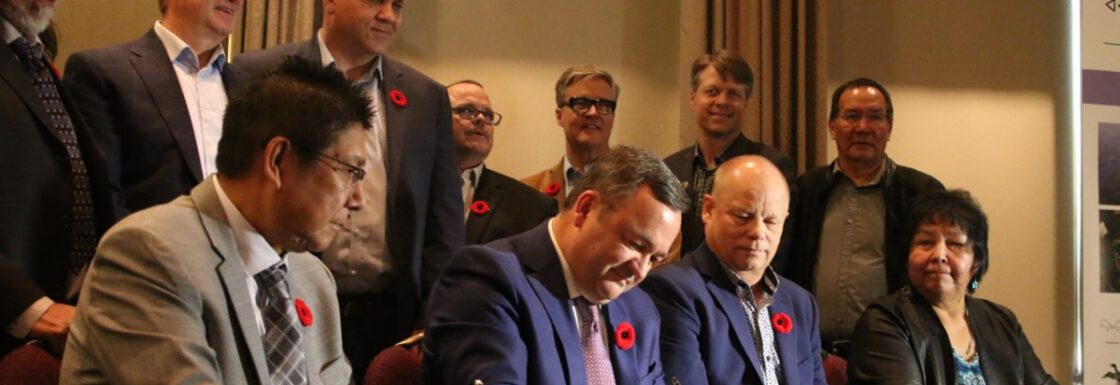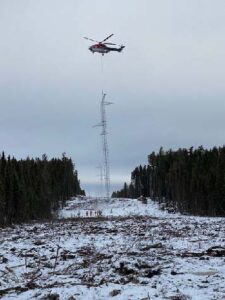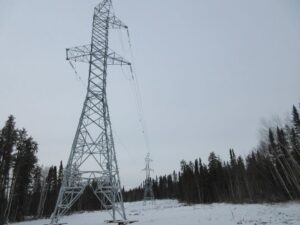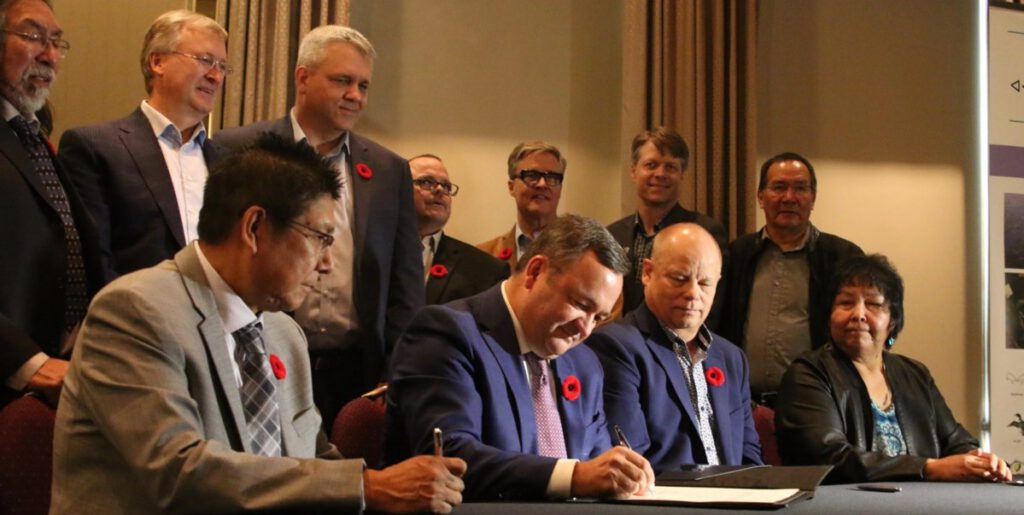Wataynikaneyap Power Project: Connecting 24 First Nations: Wataynikaneyap Power & FortisOntario

Projects Sponsor
As demand grows, diesel generation is not sufficient to sustain communities. The First Nations led Wataynikaneyap Power Project will connect 17 remote First Nations communities currently powered by diesel to the grid, allowing them to realize their full potential, in a greener, healthier way.

At the core of the Wataynikaneyap Power Project is a partnership of twenty-four First Nations as majority owners, in partnership with Fortis Inc. and other private investors, providing reliable and accessible energy to their communities. This will be one of the largest First Nations led projects ever, a model for future development and a catalyst for greater prosperity and economic self-determination.
Both population and electricity demand in Northwestern Ontario have been growing faster than other regions of Ontario. Seventeen of the twenty-four communities – representing a population of over twenty-six thousand people and peak electricity demand of approximately twenty megawatts – will be connected to the provincial transmission grid for the first time.
Electricity service within these communities is currently supplied by diesel generation, which feeds local distribution grids. Diesel fuel can only be trucked in during the limited winter road (ice road) availability and due to climate change, every year the winter road season gets shorter and shorter. When not trucked in, the fuel must be flown in. Diesel is pricey at the best of times and flying it in doubles the cost.
The choices being made around the project are not just financially shrewd, they come with a huge environmental upside. Risk of accidental spills associated with the transport of fuel oil into remote communities is well documented. Diesel spills can generate significant environmental damage and can be very costly to remediate.

The Wataynikaneyap Power Project is expected to result in over 6.6 million tonnes of avoided GHG emissions over forty years, by replacing approximately 25 million litres/year of diesel usage. A more environmentally friendly source of energy will remove the need to transport significant quantities of diesel fuel to these communities.
Current diesel generated energy is insufficient, resulting in load restrictions and power outages. Inadequate power supply is lowering the quality of life, and dramatically limiting the expansion of these remote First Nations communities. Connection to the power grid will provide cleaner, reliable, and adequate power to the population.
Why build a new house if there’s no hope of being able to walk into it, turn the lights on and start making dinner?
To this end, the Independent Electricity System Operator (IESO) drafted an economic feasibility report on connecting remote First Nations communities to the grid. The results indicated doing so would result in an estimated one  billion dollars in savings over forty years compared to continued diesel use.
billion dollars in savings over forty years compared to continued diesel use.
Environmental studies and financial feasibility studies were also done, all leading the project to the construction phase, which brings its own one-time economic impact right there – including an estimated 769 construction jobs for the region. The project is currently on track to connect all seventeen communities by 2023 and achieve full operation.
This First Nations majority-owned project (in partnership with Fortis Inc. and other private investors) provides remote, First Nations communities the ability to control development of infrastructure within their homelands to realize their full potential. Ultimately the increased capacity will bring ongoing economic and business growth to the regions, as well as improved health outcomes.
All this is done with the invaluable benefit of hugely decreased emissions and drastically reduced diesel use. That’s the power of Wataynikaneyap Power Project.














